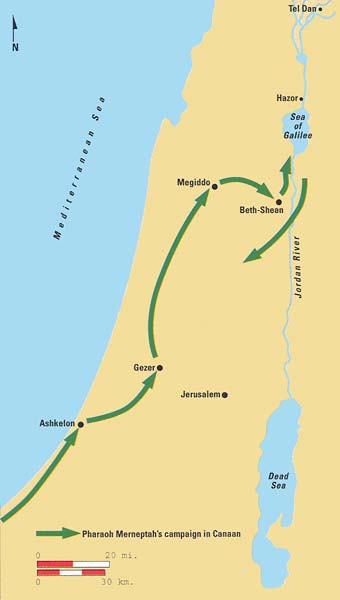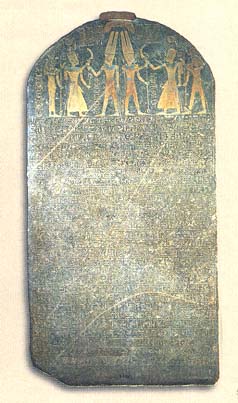The Merneptah Stela: Israel Enters History
Sidebar to: Face to Face: Biblical Minimalists Meet Their Challengers
After defeating a coalition of Libyan tribesmen and Sea Peoples, in about 1208 B.C.E., the Egyptian pharaoh Merneptah commissioned a series of victory hymns to be carved on a 7.5-foot-high, black granite stela (right) at Thebes. The stela depicts Merneptah receiving a scimitar from Amun, the god of Thebes. The hieroglyphic text recounts the pharaoh’s earlier campaigns in Canaan, among other places: “The Canaan is plundered with every hardship. / Ashkelon is taken, Gezer captured, / [and] Yano‘am reduced to nothing. / Israel is laid waste, his seed is no more.” This is the earliest known reference to Israel; thus the stela is also known as the Israel Stela.


Ashkelon, Gezer and Yano‘am (this city has not been identified) are marked in the text with a determinative (an unpronounced sign indicating the category to which a word belongs) telling us that they are city-states; “Israel” is marked with a determinative indicating that it is a people.
Already a library member? Log in here.
Institution user? Log in with your IP address.

